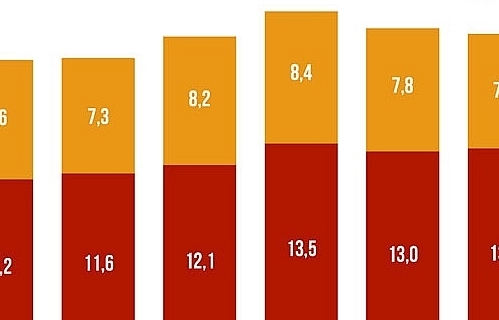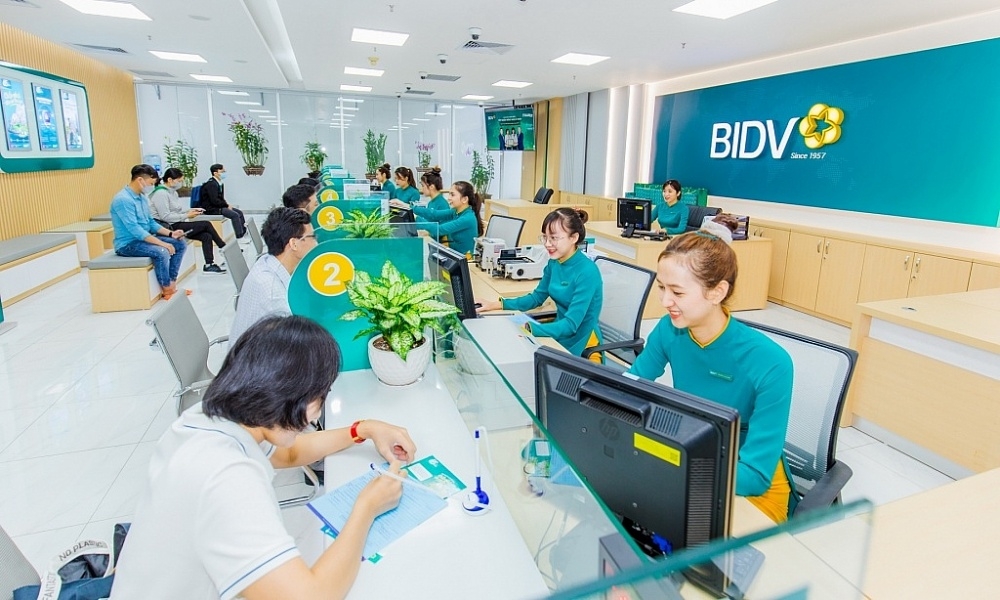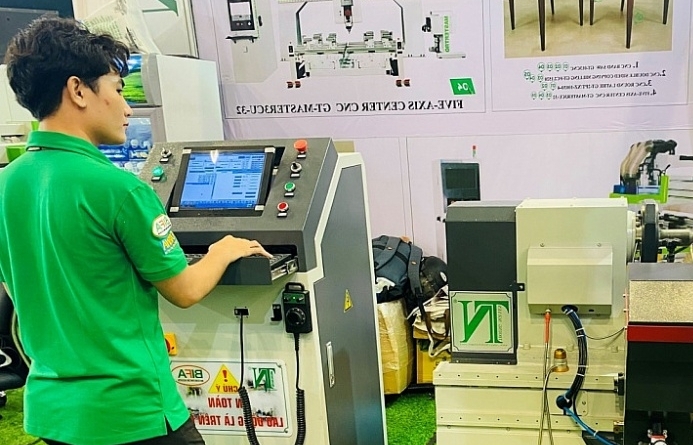Accelerating exports to FTA markets
| EVFTA helps Vietnamese businesses expand to other markets | |
| Vietnam, UK yet to tap potential of trade deal | |
| Vietnam’s agro-forestry-fishery exports face UKVFTA-related opportunities, challenges |
 |
| FTAs have helped Vietnamese agricultural products penetrate major markets. Photo: N.Hien |
More mature thanks to FTAs
New-generation Free Trade Agreements (FTAs) such as the CPTPP, EVFTA and UKVFTA after a period of implementation have had positive effects. Not only the market was expanded, export turnover to these markets also recorded high growth.
Ms. Ly Kim Chi, Chairman of the Ho Chi Minh City Food Association, said that before the implementation of the CPTPP, Vietnam's processed food products could not access these markets due to tariff barriers. However, since the CPTPP came into effect, Vietnamese goods had been able to access these markets. In the past 3 years, the export growth of food enterprises reached a high level. This was the great effort of enterprises to change their production thinking and ensure the quality of goods.
“Most recently, Vietnam has exported rice to the EU market at a higher price than Thailand. This is the result of the preparation of enterprises from seed to planting. Up to now, many enterprises in this industry have received large orders, even some enterprises have to refuse to reduce orders,” said Ms. Ly Kim Chi.
Similarly, Mr. Tran Quoc Manh, Chairman of the Board of Directors of Saigon Commercial Production Development Joint Stock Company (SADACO), said that in the past 3 years, the CPTPP had helped enterprises, especially small and medium-sized enterprises, become more mature, go deep into the global supply chain. As a result, up to now, Vietnam's wood products had gained brands in major and emerging markets.
Mr. Nguyen Dinh Tung, Vice Chairman of the Vietnam Fruit and Vegetable Association, Chairman of the Board of Directors of Vina T&T Import-Export Trading Service Co., Ltd. said that new generation FTAs were the catalyst for Vietnamese enterprises to be more well-known in these markets. Specifically, after Vietnam joined the EVFTA, many European enterprises sent emails and phone calls to Vina T&T Company.
For the coffee industry, Mr. Ly Trung Kien, Head of National Logistics Department, Nestlé Vietnam Company said that joining the FTA had helped Vietnamese enterprises attract more capital for investment and production.
New challenges
Although much progress has been made in FTA markets, the growth room is still very large. Ms. Nguyen Thao Hien, Deputy Director of the European - American Market Department (Ministry of Industry and Trade), said the market share of goods imported from Vietnam only accounted for nearly 2% of the total import scale of about 2.1 trillion EUR in the EU market. Expanding market share was not easy when the international situation was forecast to remain complicated, especially with regional and global geopolitical uncertainties, potential risks of economic recession, and disruptions of supply chains.
In addition, Vietnamese enterprises are also facing stricter non-tariff regulations, especially in new-generation FTA markets such as CPTPP and EVFTA. Ms. Nguyen Thao Hien pointed out that, recently, the EU had announced a circular textile strategy, putting great pressure on Vietnam's textile and garment products.
Similarly, Vietnam's wooden furniture products, in order to grow in export, also need to meet conditions such as VPA/FLEGT (Voluntary Partnership Agreement/Forest and Forestry Governance) license, CITES permit, and ESG standards, and CO2 emissions.
With the coffee industry, Mr. Ly Trung Kien said that consumers from Europe and the US were becoming stricter. They paid attention to the source of raw materials, so they set many technical standards that countries must comply with to ensure the sustainability of raw materials.
Faced with new requirements from markets, Mr. Nguyen Chanh Phuong, Vice Chairman of Ho Chi Minh City Fine Arts and Woodworking Association (HAWA) said that this was the driving force for Vietnamese enterprises to create new steps in production. to improve product quality.
“Environmental, labour or origin requirements are a technical barrier, but are also an opportunity to improve product quality. When enterprises overcome these requirements, they will create a new step. Therefore, enterprises must consider these requirements as achievements and must be overcome. In fact, many enterprises have overcome this challenge and achieved many results,” said Mr. Nguyen Chanh Phuong.
Besides the challenges of the export market, enterprises are also facing internal difficulties. Ms. To Thi Tuong Lan, Deputy General Secretary of the Vietnam Association of Seafood Exporters and Producers (VASEP), said that seafood enterprises were facing great credit difficulties. “Only about 60 percent of enterprises have disbursed credit. In the fourth quarter, many small and medium enterprises were not disbursed and had no orders. This puts them at risk of bankruptcy. Therefore, it is recommended that the Government create favourable conditions for seafood enterprises to borrow capital to maintain production and exports,” said Ms. To Thi Tuong Lan.
Similarly, Ms. Ly Kim Chi said that at the moment, food enterprises need to reserve a large number of raw materials to produce for the domestic market and export. But credit restrictions made enterprises face many difficulties. Sharing the same view, Mr. Nguyen Dinh Tung said that the lack of cash flow caused the export activities of enterprises to be blocked. Specifically, enterprises like Vina T&T would not be able to buy agricultural products from farmers.
“Next time, hopefully the cash flow would be circulated, and the export work will be more favourable,” Mr. Tung said.
Increasing market share before competitors enter the "playing field"
Ms. Ly Kim Chi said that it is important for enterprises to keep pace with the market to offer the products which the market needs.
In fact, some enterprises missed orders just because they could not catch up with the market.
“A Vietnamese instant noodle factory has received a huge order from the US. When sending samples, the price is accepted by the customer except for the use of an aluminum lid on the noodle cup. Customers have responded and instructed to amend, but the company refused and missed the order,” Ms. Ly Kim Chi said.
Accordingly, the story of the lid of the noodle cup or the plastic tray containing seafood products showed that catching up with the market was not simple when enterprises did not change. Therefore, enterprises were forced to study the market deeply, study market standards, and change models according to demand.
From the perspective of enterprises, to meet the new requirements of the market, Mr. Ly Trung Kien said that in the future, Nestlé would move towards regenerative agriculture by guiding farmers to use resources rationally and protect land and water sources to continue to be regenerated and used. Better land use would also help to combat climate change and increase farmers' incomes. This regenerative agricultural model would also be widely communicated to consumers, thereby helping to increase the value of coffee exports.
Mr. Ly Trung Kien said in order to sustainably export to FTA markets, enterprises should invest in sustainable development throughout the value chain, while promoting the application, digital transformation and strengthening cooperation.
To accelerate this process in enterprises, the Government should strengthen policies to support sustainable development, invest in infrastructure and promote multilateral cooperation.
Particularly for the EU market, Mr. Jean Jacques Bouflet, Vice President of EuroCham, recommended that Vietnamese enterprises should build their own brands, limit raw exports, and improve processing capacity. In addition, in order to effectively take advantage of the EVFTA, Vietnamese exporters should maximize their resources to boost exports and quickly increase their market share in the EU's agricultural import market, before the EU signed FTAs with potential competitors of Vietnam.
Mr. Jean Jacques Bouflet also noted that there was still a gap between Vietnamese standards and international standards. Specifically, Vietnam was widely applying VietGap standards, while import markets and global consumers prefer Global Gap, BAP and other international standards. Therefore, Vietnamese enterprises should focus on EU standards in building production, processing and farming processes.
“Although these standards are higher than Vietnam and standards in other markets, it will be difficult and costly to invest from the beginning, but with a long-term vision, it will help to penetrate the EU market sustainably, and once it has access to the EU market, the diversification to other markets will create more favourable momentum. This requires business leadership thinking and the support of state management agencies,” said Mr. Jean Jacques Bouflet.
In particular, the EU has implemented a set of policies and actions called the European Green Deal, with the goal that by 2050 the European economy will be more sustainable and carbon neutral. The action plan also sets out a target to reduce pesticide use by 50% and increase the share of farmland used for organic agriculture to 25% by 2030. This means that more plant pesticides will be banned in the EU, and residue levels will gradually decrease in the coming years. Therefore, Vietnamese enterprises need to pay attention to this organic consumption trend in their long-term development strategy.
Related News
Latest News

Seafood exports expected to exceed $10 billion in 2025: expert
20:28 | 21/12/2024 Import-Export

Top 10 Reputable Animal Feed Companies in 2024: Efforts to survive the challenges of nature
18:30 | 21/12/2024 Import-Export

Vietnam's import-export surges 15.3%
09:44 | 20/12/2024 Import-Export

More Vietnamese firms interested in Saudi Arabia: Ambassador
09:43 | 20/12/2024 Import-Export
More News

“Give and Take” in the Value Chain of the CPTPP Market
09:30 | 20/12/2024 Import-Export

Binh Dinh province works to attract investment from Japan
15:44 | 19/12/2024 Import-Export

Agricultural, forestry and fishery exports “reach the target” early
15:20 | 19/12/2024 Import-Export

Thailand remains Vietnam’s biggest trading partner in ASEAN
15:35 | 18/12/2024 Import-Export

Rubber value soars in 2024: VRA
15:33 | 18/12/2024 Import-Export

Vietnamese businesses struggle to access green finance
09:58 | 18/12/2024 Import-Export

E-commerce: a gateway to boost Vietnamese commodities in the UK market
16:55 | 17/12/2024 Import-Export

Agro-forestry-fisheries exports top 62 billion USD in 2024
16:51 | 17/12/2024 Import-Export

Removing “bottlenecks” for digital transformation in industrial production
10:00 | 17/12/2024 Import-Export
Your care

Seafood exports expected to exceed $10 billion in 2025: expert
20:28 | 21/12/2024 Import-Export

Top 10 Reputable Animal Feed Companies in 2024: Efforts to survive the challenges of nature
18:30 | 21/12/2024 Import-Export

Vietnam's import-export surges 15.3%
09:44 | 20/12/2024 Import-Export

More Vietnamese firms interested in Saudi Arabia: Ambassador
09:43 | 20/12/2024 Import-Export

“Give and Take” in the Value Chain of the CPTPP Market
09:30 | 20/12/2024 Import-Export




